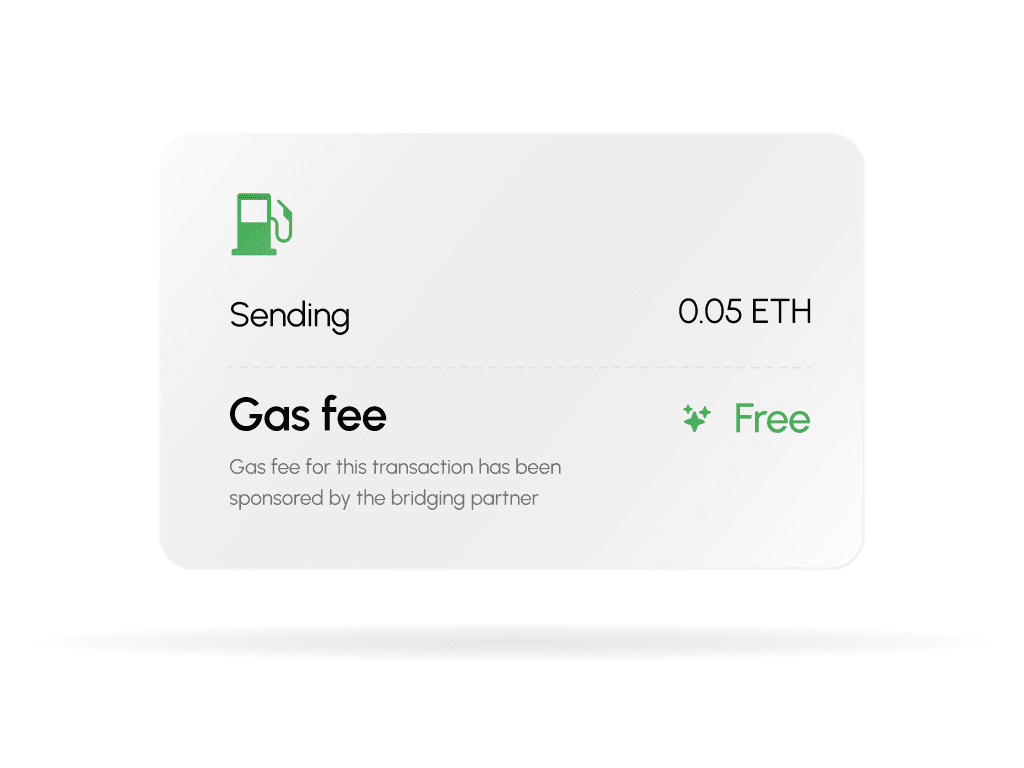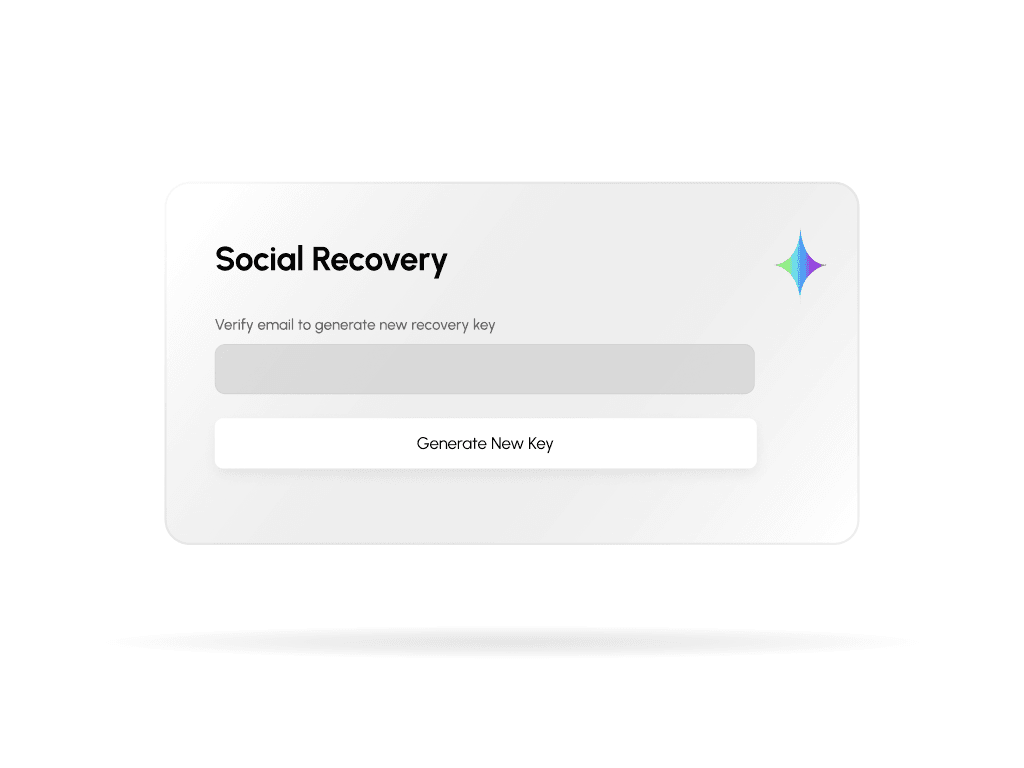What is Account Abstraction and it’s use-cases?

4 mins
Last Edited: Jul 10, 2023
Share
What is Account Abstraction and it’s use-cases?
Discover the concept of account abstraction and its significance, and explore its primary use cases.
Account Abstraction
Beginner
According to recent research conducted by CryptoAssetRecovery.com, a large number of Ethereum owners have lost access to their wallets. The study revealed that approximately 7% of the Ethereum purchased during the initial "presale" in 2014 has remained untouched in its original wallets, indicating that the owners have lost control of their private keys.
The cumulative value of these lost wallets is estimated to be around $1.6 billion, with the largest individual wallet holding approximately $60 million worth of Ethereum.
Crypto wallets are often secured with private keys that the wallet owner must securely store. If users lose or forget the private key, they can no longer access their wallet. With a private key, all the power lies in the hands of the user, so there is no central authority that can assist in retrieving the private keys if it is lost.
🧐 Let's understand how the Crypto wallet or accounts on Ethereum work
Ethereum has two main types of accounts: Externally Owned Accounts (EOAs) and Contract Accounts.
🔗 Externally Owned Accounts
Ethereum accounts are secured using a pair of cryptographic keys: public and private keys. An Ethereum Externally Owned Account (EOA) is active, can initiate transactions, pay gas fees, and execute operations on the Ethereum Virtual Machine (EVM). However, EOAs are solely controlled by a private key. Losing access to the private key means losing control over the account and the associated funds.
📄 Contract Accounts
Contract accounts (CA) in Ethereum have a distinctive characteristic: the smart contract code determines the ownership and control of assets within them. However, contract accounts are considered "passive" in practice. This means they can only initiate transactions when triggered by transactions from externally owned accounts (EOA). Their actions are governed by the logic defined within their code.
In 2021, Wallet Recovery Services, a company specializing in assisting individuals in locating their lost digital keys, witnessed a significant surge in demand. They received an average of 70 recovery requests daily.
In the blockchain world, private keys are the gatekeepers to our digital wealth but have inherent flaws. Once lost, they are gone forever, along with all the digital assets they protect.
Wait, what if I told you that the concept of account abstraction is here to revolutionize how we handle private keys? Imagine a world where our private keys become smart, allowing us to create fallback mechanisms and regain control of our digital assets if it's lost or even disappear entirely.
Let's dive into the concept of account abstraction and explore in detail-
Account abstraction has emerged as a powerful concept that aims to blur the boundaries between EOAs and Contract Accounts (CAs) in Ethereum. CAs are passive and require EOAs to trigger their actions. But with account abstraction, a new paradigm comes into play-
Account abstraction ( AA) tackles these concerns by merging CAs and EOAs into a unified framework. The process involves separating the transaction signing logic from the account itself, resulting in the term "Account Abstraction."
AA in Ethereum is about making managing our accounts easier and more flexible. It brings in these "smart contracts" that take care of our Ethereum account. Instead of relying solely on private keys, Ethereum now allows delegating authority to smart contracts. These smart contracts act as intermediaries, abstracting away the complexities of account management.
And the best thing is we can set up all sorts of custom rules for spending our cryptos, initiating transactions, and maintaining our crypto assets. It's like having a trusted assistant to handle our account on behalf of us!
Okay, let's break it down -
Now, from a user perspective, account abstraction means we don't have to worry about the technical complexities of interacting with Ethereum accounts. The tricky stuff is hidden behind user-friendly interfaces, making it easier for users to use their wallets.
But let's clear up some confusion. Account abstraction doesn't mean our accounts are completely detached from us. We still have a wallet address to receive funds, and we'll have a signing key to ensure we can only spend those funds. It's more like using a smart contract account that handles some blockchain interactions while we still have control over our tokens.
This breakthrough in account abstraction brings a whole new level of flexibility. It allows us to create accounts with add-on features like multi-signature support, two-factor authentication (extra security!), withdrawal limits (spending control!), and even adding trusted guardians (like having backup buddies!). It's like the blockchain version of credit cards but with even more possibilities.
Top use cases of Account Abstraction
💵 Batching Multiple Transactions
In Externally Owned Account (EOA) wallets, there is inefficiency and inconvenience of executing multiple transactions sequentially, resulting in long wait times and high gas fees. It often occurs when attempting a simple task, such as swapping one token for another, which requires multiple transaction steps.
Account abstraction addresses this issue by enabling the batching of multiple transactions into one transaction. With AA, users can initiate a series of actions or transactions as a single unit, reducing the overall gas fees and waiting time while interacting with DApps or smart contracts. This batching capability allows us to complete multiple steps or actions in a single click or interaction, streamlining the user experience and making it more efficient.
⛽️ Pay Gas fees on your choice of token
In the Ethereum network, gas fees are exclusively paid in Ether. This means that whenever we want to initiate a transaction or execute a smart contract on the Ethereum blockchain, we must have enough Ether in our account to cover the associated gas fees. With account abstraction, this limitation is overcome. Account abstraction enables users to pay gas fees using any token they hold, not just Ether. This means that we can utilize the tokens from our wallets to directly pay for gas fees without converting them to Ether first.
🏢 Gasless Transactions
Gasless transactions, also known as sponsored transactions, allow users to initiate transactions without directly paying the associated gas fees. In this process, a smart contract or program acts as a sponsor, taking care of the gas fees on behalf of the user. This feature brings users a lot of convenience and simplicity, especially in decentralized finance (DeFi) applications.
With gasless transactions, users are no longer required to hold and spend the native cryptocurrency for gas fees. Instead, the sponsor steps in and covers those fees. The sponsor can consider it an "acquisition cost" or ask the user to pay in a different token. This mechanism effectively bridges the gap between DeFi and traditional finance by allowing users to transact without the need for specific tokens for gas fees.

🤝🔒 Social Recovery
In current wallet recovery methods, we typically rely on a recovery phrase or seed phrase to regain access to their wallet. However, if we lose the recovery phrase, wallet funds become permanently inaccessible. Account abstraction with social recovery addresses this issue by introducing a more secure recovery process. By designating multiple trusted individuals as recovery agents, we can distribute the responsibility of account recovery among a network of trusted contacts. This decentralized approach mitigates the risks of relying solely on a single recovery phrase.

✍️👥 Multi-Signature Authorisation
Traditional blockchain systems typically implement multi-sig wallets as separate smart contracts interacting with externally owned accounts (EOAs). The process involves EOAs initiating transactions, paying the gas fees, and then calling the multi-sig smart contract to request transaction execution. Once the required number of signatures is obtained, the multi-sig contract refunds the initial gas fee paid by the EOA.
However, with account abstraction, every account is inherently a smart contract. In this scenario, when we initiate a transaction from our account (smart contract), the account's programming includes the requirement for multiple signatures. The account logic verifies that the transaction proposal includes the necessary valid signatures before processing the transaction. Hence, it simplifies the process and eliminates the additional steps and complexity associated with interacting with a separate multi-sig contract.
🛡️ Transaction Guards
Wallets can potentially transform users' self-custody experience by implementing an account abstraction concept called "Transaction Guards." This concept allows users to establish predefined conditions and rules that must be satisfied before a transaction can be executed. By incorporating Transaction Guards, wallets provide an additional layer of security and control, empowering us to enforce specific transaction requirements according to our preferences. This use case encompasses various features, including the ability to set withdrawal limits, define daily spending limits, etc.

🔒 The Future of Account Abstraction
The adoption of account abstraction, introduced by Vitalik Buterin, continues to be in discussions and debates even years later. EIP-4337 has received broad support within the Ethereum community as it offers a viable approach to implementing account abstraction without requiring significant changes to the Ethereum protocol. It signifies a paradigm shift that brings about profound changes and advancements-multi-signature support, withdrawal limits, two-factor authentication, etc.
One of the key beneficiaries of account abstraction will be DApps, particularly those in the decentralized finance (DeFi) and non-fungible token (NFT) sectors. The synchronization of user wallets with smart contracts, made possible by ERC-4337, will create a seamless and intuitive user experience. Moreover, DApp developers will no longer be bound by the limitations of a single blockchain, as smart contract wallets will eventually be able to connect and interact across different chains. This interoperability will allow developers to create chain-agnostic services, expanding the reach and impact of their projects.
In conclusion, ERC-4337 has paved the way for a more user-friendly and inclusive blockchain ecosystem. By simplifying complex tasks and abstracting the underlying technicalities, this standard has made blockchain applications more accessible to everyday users. As the technology continues to advance, we can expect even greater simplification and accessibility, opening up new opportunities for individuals to engage with and benefit from the transformative potential of blockchain technology.
As the Ethereum community evaluates the various proposals and their implications, finding a consensus on the best way to implement account abstraction remains an ongoing process. The ultimate goal is to balance introducing innovation and minimizing disruption to the existing Ethereum ecosystem.
🔑 Key Takeaway
Account abstraction is a revolutionary concept in the blockchain world that aims to blur the boundaries between Externally Owned Accounts (EOAs) and Contract Accounts (CAs) on Ethereum. It tackles the current challenges associated with private key management, offering new possibilities and enhancing UX